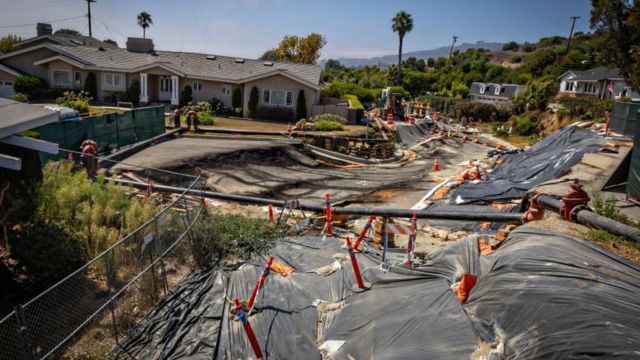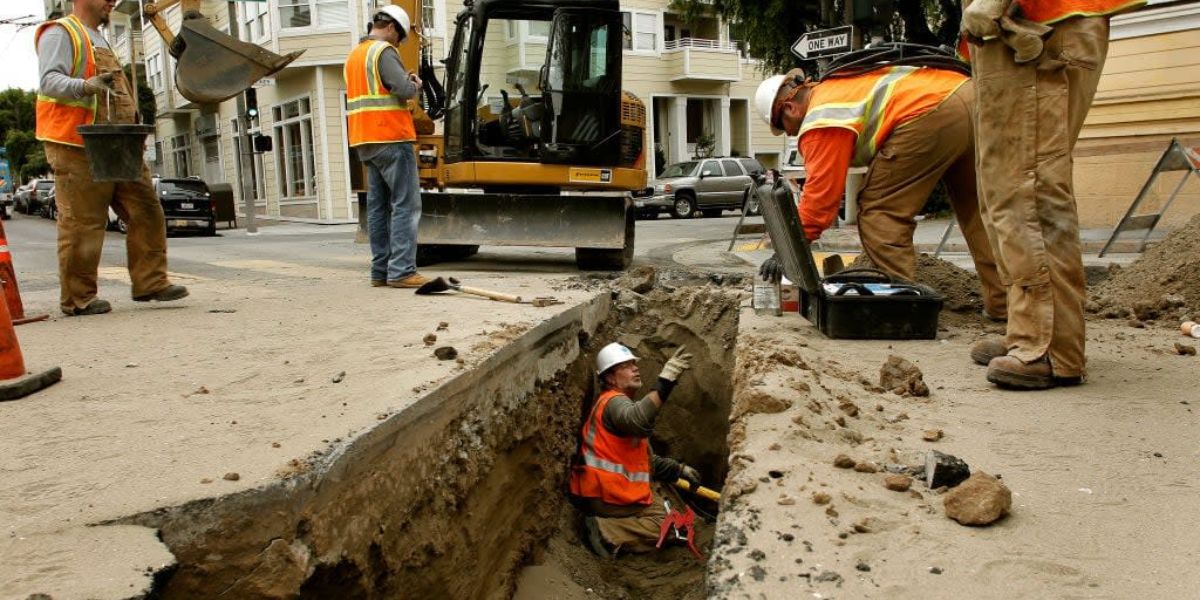Residents of certain communities in California may begin to receive unsolicited proposals from gas companies and community organizers in the coming years. One such proposal is to replace gas appliances with electric ones.
That’s the future that the environmental groups who supported Senate Bill 1221—a measure that was passed in the last days of the California legislature—envisioned for utilities. The bill sought to authorize the launch of up to thirty “zonal decarbonization” projects.
With Governor Gavin Newsom’s (D) signature this month, Senate Bill 1221 would direct state regulators to pave the way for utilities to propose pilot programs that might provide entire neighborhoods the chance to transition from gas-fired appliances to electric ones.
The Building Decarbonization Coalition is one of the charities supporting Senate Bill 1221. According to Beckie Menten, a senior regulatory and policy specialist, there is a lot that needs to happen in the next two years for its zonal decarbonization initiatives to materialize, even if the bill is signed into law. She did, however, say that the law is among the finest solutions available because of the short time frame the state has to reduce carbon emissions from buildings.
Menten stated, “We see this as a really important affordability measure going forward because it helps stop the gas-rate spiral we see happening.” This statement highlighted the difficulty gas utilities are encountering in states like California, New York, Illinois, and Massachusetts, which have set ambitious goals to reduce carbon emissions.
To put it plainly, gas utilities shell out billions of dollars annually to fix and replace gas lines. Monthly gas bills are how gas companies pay back their investments, which can take up to half a century in some cases. In states that have ambitious decarbonization goals, utilities must drastically reduce the amount of fossil gas they sell over the next 25 years. This is a long time before the present pipeline expenditures will pay for themselves.

The estimated cost of these “unrecovered” investments for gas utilities in the United States might reach $150 billion to $180 billion in the next decade, according to a forecast from consulting firm Brattle Group in 2021.
This means that lawmakers are under immediate pressure to find solutions to the problem of gas pipeline investment that will not compromise the network’s security or prevent consumers from getting the energy they need.
According to Menten, both objectives are achieved by zonal decarbonization since utilities redirect the funds that would have gone for pipes toward assisting customers in transitioning away from the gas system and toward electrification.
Customers who may not be able to afford electric equipment on their own would benefit and investment in the gas system would drop, she added.
Colorado, Illinois, Massachusetts, Washington, and New York are among the states that are now conducting experiments to determine the most effective methods for decarbonizing gas systems. Utilities in the Northeastern United States are constructing thermal energy networks, which are pipelines that bring liquid from beneath to close to the surface in order to make heat pumps more efficient in residential and commercial buildings.
Xcel Energy, a utility in Colorado, has announced a Clean Heat Plan that would allocate $440 million over three years toward electrification and energy efficiency projects aimed at decreasing emissions from the delivery of natural gas.
A few of customers in California who use gas lines that would be expensive to fix have agreed to convert to electric heating and appliances as part of utility Pacific Gas & Electric’s smaller-scale “targeted electrification” programs. To far, however, PG&E’s efforts have been hampered by the company’s commitment to obtaining full consumer support for the changeover.
In contrast, SB 1221 would permit zonal decarbonization projects to move forward—according to Kiki Velez, an equitable gas transition advocate for the Natural Resources Defense Council, one of the principal proponents of the bill—if 67% or more of all impacted customers approved it. That way, utilities like PG&E can keep their projects from being derailed by a small number of dissenters; however, they should also be careful not to turn off customers who prefer gas, as she pointed out.
Massachusetts municipalities adopt green construction standards voluntarily, along with further news.
She further clarified that SB 1221 mandates cost-effectiveness in zonal decarbonization projects, saying that the utility’s expenditure on the project must be lower than the cost of the pipeline investments that are being avoided.
Customers should be paid for the additional cost of switching to electric heating and equipment, as well as the electric bills that would be incurred as a result, she added. Utilities are obligated by law to prioritize areas that are very vulnerable to the economic impact of ever-increasing gas prices.
The measure specifies that the program must be established by July 2026 by the California Public Utilities Commission. This will allow us to address these details, according to Velez. Midway through 2025, the major gas utilities in California, including PG&E, SCE, and SDGE, will be required to submit maps to the CPUC. These maps will show the intended gas-distribution investments, their estimated costs, and any “disadvantaged communities, tribes, and other priority decarbonization zones” that may be identified.
According to her, those maps have not yet been created by Sempra-owned Southern California Gas and SDG&E. However, as part of its continuous efforts on gas-to-electric switching, PG&E has developed one. This includes its first “zonal electrification” pilot, which aims to electrify approximately 1,200 housing units owned by state universities.
Theoretically, “PG&E can hit the ground running with proposing larger-scale pilots,” Velez stated. “Literally hundreds of projects they could move forward that hit that cost-effectiveness criteria,” Menten agreed with PG&E.
The way SB 1221 handles the expense of heat pumps and other electric-powered equipment that utilities will likely need to pay for participants is one aspect that Menten is concerned would discourage utilities from advancing pilot projects. Utilities cannot claim these expenses as capital expenditures that generate assured profits under the proposed law.
According to Menten, an earlier draft of the measure would have given the CPUC the authority to decide “where capitalization makes sense and where it doesn’t” at its own discretion. That phrase was removed from the bill before it was passed, though, because the parliamentary session was concentrated on trying to adopt measures to control growing power costs.
She argued that, in the end, ratepayers would be better off without such capitalization. However, “you’re asking the utility to choose not to make money” when you propose a zonal electrification alternative and urge a utility to forego the revenues it would have gained from pipeline investments.
According to Menten, these pilot initiatives are limited to no more than 1% of a utility’s consumers per SB 1221. However, if these projects lead to larger-scale legislation, we can ask again how gas companies can get their money back.
Contrarily, she pointed out that while SB 1221 does not mandate anything, it does allow utilities to submit experimental initiatives. There may be “a disincentive under the current regulations for utilities to bring this forward” due to the lack of a capital-recovery system for the equipment that is installed in homes and businesses.
Working with people of designated communities to ensure they are willing participants in electrification is another difficulty, she added. During her time with Ava Community Energy, a community energy supplier, Menten was involved in a project that was financed by the California Energy Commission. The initiative sought to assess the level of interest and ability to transition from gas to electric power in several San Francisco Bay Area communities.
“Residents have concerns regarding home electrification including upfront costs, lack of familiarity with electric equipment, and increases in electricity costs,” it said in the project’s final report. To successfully complete the project, it will be crucial to do extensive outreach and education, get upfront money, and consider the possibility of bill guarantees. Within the initiative, just one project ultimately moved forward.
Among the other topics brought up by Menten were the following: developing partnerships with “trusted messengers” such as community and church groups; and dealing with “ghost homes,” or houses that are either unoccupied or inhabited by persons who choose not to participate in the process.
“These projects are being completed block-by-block,” she stated. “You must fully grasp the intricacies of every block.”




